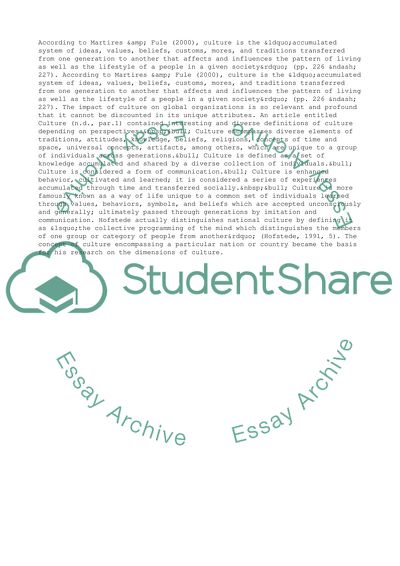Cite this document
(Hofstedes Dimensions of Culture Case Study Example | Topics and Well Written Essays - 2500 words, n.d.)
Hofstedes Dimensions of Culture Case Study Example | Topics and Well Written Essays - 2500 words. Retrieved from https://studentshare.org/business/1735724-critically-evaluate-the-five-dimensions-that-constitute-hofstedes-1980-model-of-culture
Hofstedes Dimensions of Culture Case Study Example | Topics and Well Written Essays - 2500 words. Retrieved from https://studentshare.org/business/1735724-critically-evaluate-the-five-dimensions-that-constitute-hofstedes-1980-model-of-culture
(Hofstedes Dimensions of Culture Case Study Example | Topics and Well Written Essays - 2500 Words)
Hofstedes Dimensions of Culture Case Study Example | Topics and Well Written Essays - 2500 Words. https://studentshare.org/business/1735724-critically-evaluate-the-five-dimensions-that-constitute-hofstedes-1980-model-of-culture.
Hofstedes Dimensions of Culture Case Study Example | Topics and Well Written Essays - 2500 Words. https://studentshare.org/business/1735724-critically-evaluate-the-five-dimensions-that-constitute-hofstedes-1980-model-of-culture.
“Hofstedes Dimensions of Culture Case Study Example | Topics and Well Written Essays - 2500 Words”, n.d. https://studentshare.org/business/1735724-critically-evaluate-the-five-dimensions-that-constitute-hofstedes-1980-model-of-culture.


